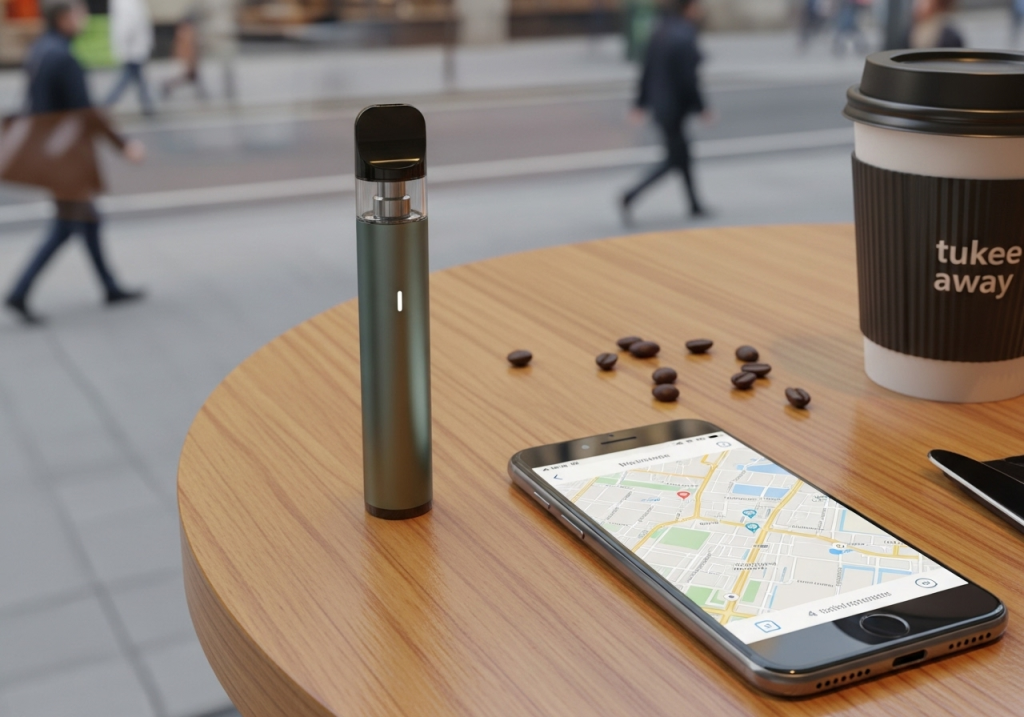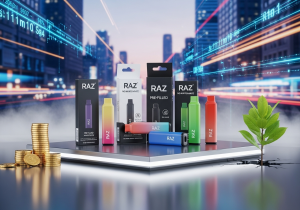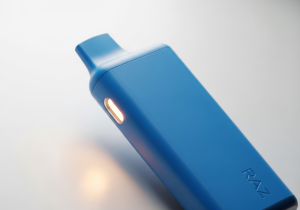You love vaping, but carrying a bulky mod, spare batteries, and a bottle of e-liquid is a hassle. This complexity makes you question if there’s an easier way to vape on the go.
Raz disposable vapes are shaping the future of on-the-go vaping by prioritizing ultimate convenience. They eliminate maintenance, refilling, and technical know-how. Their market dominance will depend on how users weigh this simplicity against long-term cost and environmental factors.
When I started in this business, the focus was all on powerful, customizable mods. But over the years, I’ve seen a massive shift. A client like Matt, who buys for a major U.S. brand, tells me his customers want effortless solutions. They want something that just works, right out of the box, without any fuss. This demand for simplicity is what puts disposables at the forefront of the conversation about the future of vaping. Let’s explore if this convenience is enough to make them the undisputed king of on-the-go use.
Key Takeaways:
- Raz disposables offer unmatched convenience with zero maintenance, making them ideal for new or busy vapers.
- While refillable systems have a lower long-term cost per puff, disposables have a much lower entry cost.
- The environmental impact of single-use devices is a significant challenge for the future of disposable vapes.
- Consumer demand for simplicity is currently the strongest factor driving the growth of disposables like Raz.
What Makes Raz Disposable Vapes More Convenient Than Traditional Devices?
You’re tired of dealing with leaky tanks, burnt coils, and dead batteries at the worst times. The constant maintenance of your traditional vape feels more like a chore than a hobby.
Raz disposable vapes are more convenient because they are an all-in-one solution. They come pre-filled, pre-charged, and are ready to use immediately. There are no buttons, no settings, no parts to replace, and no cleaning required. It’s the simplest way to vape.
From a manufacturing perspective, the goal of a disposable is to remove every possible barrier between the user and the experience. Traditional devices, often called mods or pod systems, require the user to be a part of the maintenance cycle. Disposables take on that burden themselves.
Let’s look at a direct comparison of the user journey:
| Feature | Raz Disposable Vape | Traditional Refillable Vape |
|---|---|---|
| Initial Setup | Open package and vape. | Assemble, charge, fill tank, prime coil. |
| Daily Use | Inhale to activate. | Check battery, refill e-liquid, adjust settings. |
| Maintenance | None. Dispose of when empty. | Clean tank, replace coils, recharge battery. |
| Portability | Small, lightweight, no extra parts needed. | Device plus a bottle of e-liquid is needed. |
This is why disposables appeal to such a broad audience. There is no learning curve. For someone who values time and simplicity, the convenience is absolute. You don’t need to understand ohms or wattage; you just need to know what flavor you want. This simplicity is the core reason for their explosive popularity.
How Do Raz Disposables Compare in Cost and Value to Refillable Options?
You enjoy the ease of disposables but notice you’re buying them often. The costs add up, and you wonder if you’re paying too much for the convenience.
Disposables like Raz offer a low initial purchase price, making them very accessible. However, refillable vapes provide better long-term value, as the ongoing cost of e-liquid and replacement coils is significantly lower than continuously buying new disposable units.
When Matt places an order, he is balancing the price his customers are willing to pay against the value they receive. This cost-value relationship is very different between disposable and refillable systems.
Let’s break down the economics for a typical user:
- Upfront Investment: A single Raz TN9000 might cost around $15-$20. A decent refillable starter kit, however, can cost $30 to $50. The disposable wins on initial affordability.
- Ongoing Expenses: Once the Raz is empty, you buy a new one. With a refillable kit, you buy a bottle of e-liquid (around $15 for the equivalent of several disposables’ worth) and a new coil every week or two (around $3-$5).
Here is a simplified cost scenario:
| Cost Type | Raz Disposable (e.g., TN9000) | Refillable System |
|---|---|---|
| First Month | ~$60 (assuming 3-4 devices) | ~$45 ($30 kit + $15 liquid) |
| Second Month | ~$60 | ~$15 (liquid + coils) |
| Total Value | High convenience, no maintenance. | Lower cost, flavor choice, customization. |
The "value" is subjective. If you are an occasional vaper or someone who prioritizes convenience above all, the slightly higher long-term cost of a disposable might be a worthwhile trade-off. For a heavy daily user, a refillable system is almost always the more economical choice.
Are Disposable Vapes a More Sustainable Choice for the Vaping Market?
You see disposable vapes everywhere, and it makes you think about the waste. You wonder if the industry is moving toward a less environmentally friendly future.
No, disposable vapes are fundamentally less sustainable than reusable options. Each device contains a lithium-ion battery and plastic casing that are discarded after a single use, creating significant electronic waste. This is one of the biggest challenges facing the industry.
This is a topic I discuss frequently with buyers and engineers. The convenience of disposables comes at a direct environmental cost. We cannot ignore it.
The E-Waste Problem:
A disposable vape is classified as electronic waste (e-waste) because of its internal battery and circuitry. These components should not be thrown into regular trash because:
- Lithium-Ion Batteries: They can leak harmful chemicals into the soil and groundwater. They also pose a fire risk in garbage trucks and landfills.
- Plastic Casing: The outer shells are made from durable plastics that take hundreds of years to break down.
- Resource Inefficiency: Creating and then discarding millions of batteries and circuit boards for single-use products is an inefficient use of valuable resources like lithium and copper.
The Path Forward:
The future of disposables must address sustainability. Some of the solutions we are exploring in the industry include:
- Recycling Programs: Creating clear, accessible programs for consumers to return used devices for proper disassembly and recycling.
- More Efficient Designs: Using fewer materials or more easily recyclable plastics.
- Hybrid Systems: Developing devices where only the e-liquid pod is disposable, while the battery component is rechargeable and reusable over the long term.
For now, the responsibility falls on both manufacturers to innovate and consumers to dispose of these devices properly at e-waste facilities.
Will Consumer Demand Push Raz Disposables to Dominate On-the-Go Vaping?
You see more people using disposables than any other type of vape. You’re left wondering if this trend is just a phase or if it’s the new standard.
Yes, current trends indicate that strong consumer demand for simplicity and convenience will likely make disposables the dominant force in on-the-go vaping for the foreseeable future. Their grab-and-go nature perfectly fits a fast-paced, modern lifestyle, often outweighing cost and environmental concerns for many users.
Ultimately, the market is driven by what customers want. And right now, what they want most is an effortless experience.
Why Simplicity Wins:
- No Learning Curve: Anyone can use a disposable instantly, which expands the market beyond experienced hobbyists.
- Lifestyle Integration: A disposable fits into a pocket or purse without any extra accessories. It’s an accessory itself, not a piece of equipment to be managed.
- Flavor Exploration: The lower cost per unit allows users to try a wide variety of flavors without committing to a full bottle of e-liquid.
This is the feedback I get from Matt and other global partners. Their customers are not vape technicians; they are busy people looking for a satisfying and simple product. While vaping veterans and environmentally conscious users may stick with refillable systems, the sheer volume of new and casual users gravitates toward the path of least resistance. Barring major regulatory changes or a significant shift in consumer priorities toward sustainability, the demand for convenience will ensure that Raz disposables and similar products remain the leaders of the on-the-go market.
Conclusion
Raz vapes represent the future of on-the-go vaping because they master convenience. While cost and sustainability are real issues, the overwhelming consumer demand for simplicity currently places disposables at the top.
FAQ
Q1: How should I properly dispose of a Raz vape?
You should treat it like any other electronic device with a battery. Do not throw it in the regular trash. Take it to a local e-waste recycling center or a vape shop that offers a disposal program.
Q2: Will disposable vapes ever become as cheap as using a refillable?
It’s unlikely. The cost of the battery, chipset, and pre-filled pod in every single unit means the manufacturing cost per puff will always be higher than just buying bulk e-liquid and a reusable coil.
Q3: Are there any reusable vapes that are almost as easy as a disposable?
Yes, modern pre-filled pod systems (like JUUL or Vuse) are a close alternative. They have a rechargeable battery that you keep, and you only replace the small, pre-filled e-liquid pods. They offer more simplicity than fully refillable tanks.
Q4: What is Raz doing to address environmental concerns?
As a manufacturer, we are actively researching more sustainable materials and promoting consumer education about proper e-waste recycling. The industry is working on solutions, but it’s a significant challenge.





